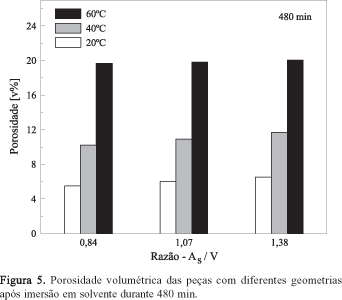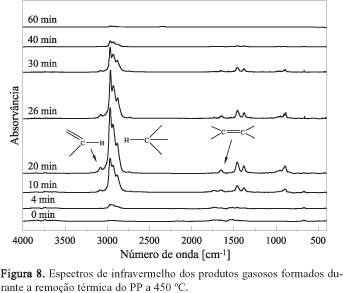Powder injection molding [PIM] has become highly attractive as it combines the versatility and productivity of conventional injection molding processes with the intrinsic properties of metallic and ceramic materials. The removal of organic binder, used as vehicles during the process, is one of the most critical stages in the production of ceramic devices in this process. In this work, the influence from the geometry of the injected part on the removal of the organic binder was evaluated for both solvent immersion and thermal degradation processes. Alumina powder was mixed with an organic binder, comprising polypropylene [PP], paraffin wax [PW] and stearic acid [SA], and injection molded in different geometries. Immersion of ceramic parts in hexane induced the solubilization of PW and SA, confirmed by weight variation. Parts porosity, determined through nitrogen adsorption isotherm, showed an increase from 0.5 v% before immersion to ca. 20 v% after immersion. PP burnout produced aliphatic hydrocarbons and unsaturated compounds that flow through a porous structure produced in early stages of this process. Parts geometry plays an important role in binder removal, affecting the quality of the sintered part as well as the remaining stages of the process.
Powder injection molding; alumina; polypropylene; binder removal













